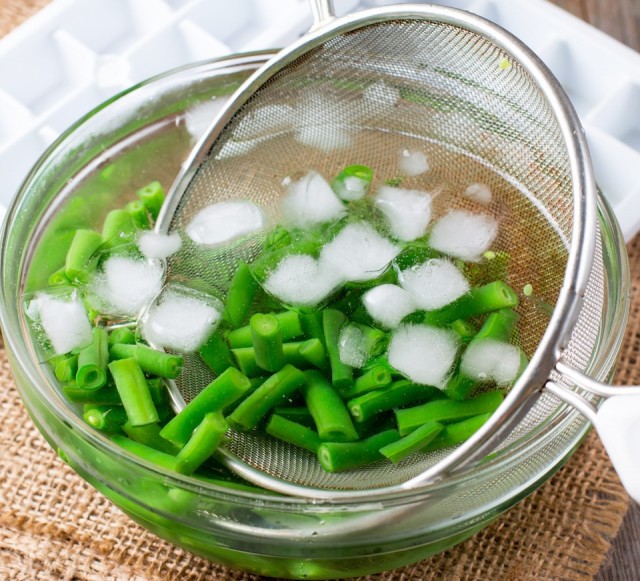Blanching is a process used in the home kitchen as well as used as a pre-treatment in the food industry. In both cases, its main purpose is to inactivate enzymes that cause browning as well as textural changes and off-flavors. These enzymes are responsible for the loss of flavor, color, texture and nutritional qualities during product storage. Blanching preserves the flavors found in fruits and vegetables by inactivating enzymes responsible for off-flavor development.
The blanching process expels air trapped inside plant tissues, which is a vital step before canning. It prevents the expansion of air during processing, which reduces strain on the containers and the risk of cans having faulty seams. Moreover, removing gas from foods like pears results in better texture and reduces oxidation of the product. Also, the intercellular gases removed results in better color retention.
Fruits, vegetable, and nut peeling are also important in food processing. When almonds or pistachios are blanched, the skin of the nut (botanically the seed coat surrounding the embryo) softens and can be easily removed later. Steam peeling produces less environmental pollution and peeling losses, as compared to chemical or manual peeling processes.
Other uses of blanching are enhancing drying rate and product quality, decreasing microbial load, removing pesticide and toxic residues, increasing extraction of bioactive compounds, surface cleaning, removing damaged seeds or foreign materials, killing parasites and their eggs, and reducing oil uptake.
Traditionally, blanching is done using either a water bath or saturated steam. In both methods, the food is heated for a short period of time and then introduced into either cold water or cold air to quickly stop the heating process. At the industrial level, foods move on a continuous conveyor belt through preheating, holding, and cooling. For hot water blanching, vegetables are immersed under pre-warmed water for varying amounts of time, depending on type and quantity. When the product is heated by water, greater uniformity of heating is achieved, especially when compared to hot air. This advantage allows hot water blanching at lower temperatures, but requires longer blanching times. Water is heated and cooled using heat exchangers and recirculated for continuous use, reducing costs.

